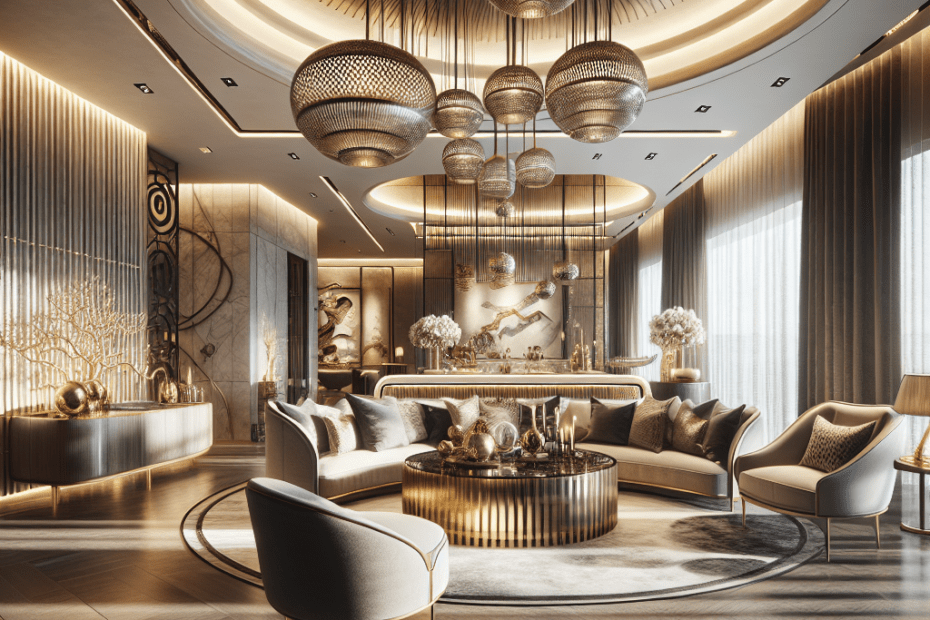“`html
The Essentials of Layered Lighting in Luxe Modern Interiors
Layered lighting is a key element in luxe design that transforms modern interiors into inviting, stylish, and functional spaces. While many people are familiar with basic lighting schemes, they often miss the rich depth and sophistication that layered lighting can bring to a setting. In a world where interior design is constantly evolving, layered lighting is growing in demand due to its adaptability and the enhanced aesthetics it provides.
Understanding Layered Lighting
Layered lighting involves the strategic use of multiple light sources to create a balanced and visually appealing environment. This approach contrasts starkly with spaces that rely solely on a single overhead light. Instead, layered lighting combines ambient, task, and accent lighting to deliver functionality and ambience.
- Ambient Lighting: This is the primary source of light used to illuminate the overall space. It’s typically soft and diffused, designed to create a comfortable level of brightness. Examples include ceiling fixtures or natural light from windows.
- Task Lighting: This form of lighting offers targeted illumination for specific activities like reading or cooking. Desk lamps, under-cabinet lights in kitchens, and vanity lights in bathrooms are classic examples.
- Accent Lighting: Used to highlight particular features such as artwork, architectural highlights, or decorative elements, accent lighting adds depth and contrast.
The Role of Layered Lighting in Luxe Design
In luxe design, layered lighting is paramount. Combining various lighting techniques not only enhances the visual appeal but also enriches the experience within the space. Luxe interiors demand meticulous attention to detail, and lighting is no exception. According to a survey conducted by the American Lighting Association, 95% of interior designers believe that proper lighting enhances the overall design aesthetic. Incorporating layered lighting in luxe design ensures that interiors are not just practical but also exude elegance and sophistication.
Key Components of Layered Lighting in Luxe Interiors
Luxe interiors focus on quality, detail, and creating a sense of exclusivity. Here’s how layered lighting contributes to these elements:
- Customization: Multiple light sources allow for adjustable lighting schemes tailored to different moods and occasions. They can switch from a bright, energizing setting for the daytime to a warm, cozy environment at night.
- Dimensional Depth: Layered lighting adds dimension by creating contrasts and shadows, enhancing the richness of textures and colors in the room.
- Highlighting Architectural Features: With accent lighting, intricate architectural details like moldings and textures become focal points, enhancing the room’s luxurious feel.
- Functionality and Comfort: Well-placed task lighting ensures activities are supported without strain, catering to the practicality expected in high-end design.
Integrating Technology in Layered Lighting
Modern interiors often incorporate technology to create efficient and flexible living environments. Smart lighting systems are increasingly popular, allowing users to control and adjust lighting layers with ease through apps or voice commands. According to Statista, the smart lighting market is expected to grow by 20.7% annually, illustrating the growing integration of technology in household lighting. This technological advance makes layered lighting more customizable, offering users tailored experiences at the touch of a button.
Layered Lighting Benefits
| Benefit | Impact |
|---|---|
| Enhanced Aesthetics | Improves overall design with depth and sophistication |
| Increased Functionality | Supports various activities with targeted lighting |
| Greater Flexibility | Adapts to different moods and events easily |
| Energy Efficiency | Smart lighting systems optimize energy use |
Conclusion
Layered lighting is more than an aesthetic choice in luxe modern interiors; it’s a necessity that enhances functionality and enhances visual enjoyment. The science and art behind layered lighting help design spaces that are not only beautiful but also efficient and adaptable. Luxe design thrives on ambiance, and through layered lighting, interiors radiate the sophistication and exclusivity that defines luxury living.
Key Takeaways
- Layered lighting combines ambient, task, and accent lighting to enhance space aesthetics.
- 95% of interior designers agree that proper lighting boosts design aesthetics.
- Smart lighting technology is increasingly incorporated into modern interiors for flexibility.
- Luxe design focuses on quality, customization, and functionality, which layered lighting supports.
FAQ
- What is layered lighting?
Layered lighting involves using a combination of different lighting types—ambient, task, and accent—to create a balanced and visually appealing space.
- Why is layered lighting important in luxe design?
Layered lighting enhances aesthetic appeal, adds depth and dimension, increases functionality, and allows for customization in high-end interiors.
- Can smart lighting systems be part of layered lighting?
Yes, smart lighting systems can integrate into layered lighting setups, offering flexibility and energy efficiency through remote control options.
- What is the role of task lighting?
Task lighting provides focused illumination for specific activities, helping to improve the functionality and practicality of spaces.
- How does accent lighting affect a room’s appearance?
Accent lighting highlights features and creates shadows and contrasts that add depth and emphasize the design and architecture of a space.
“`
